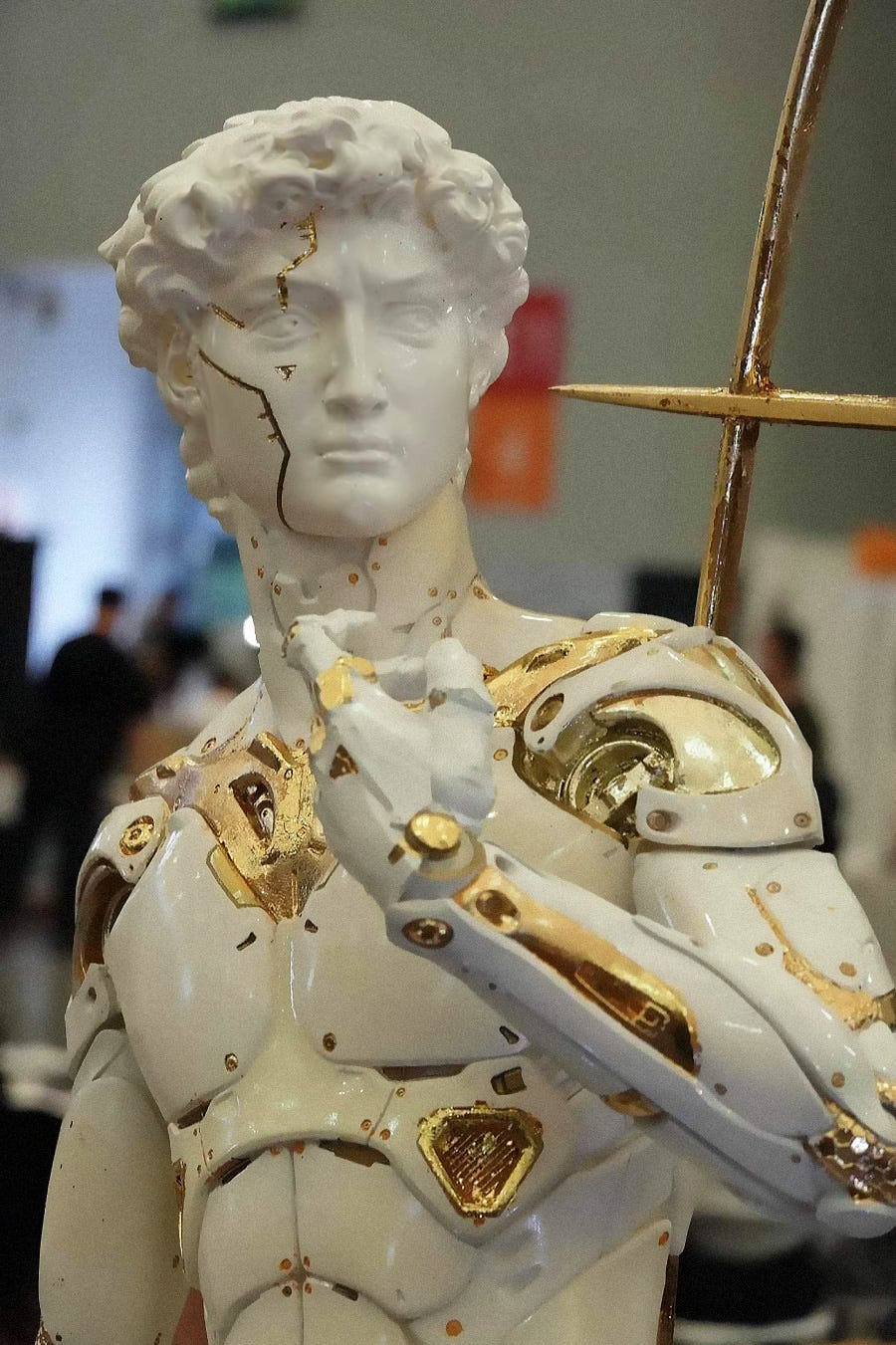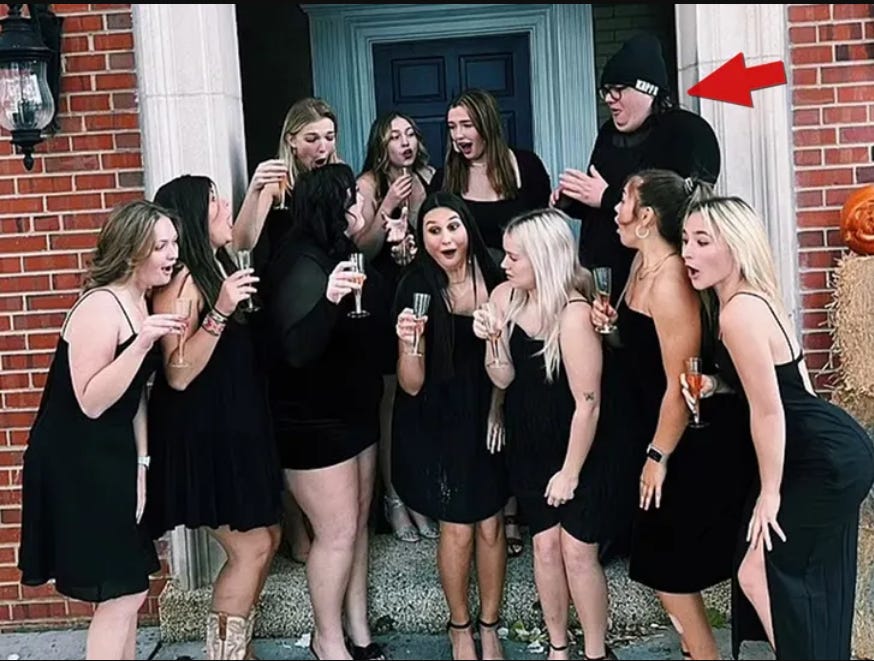DIEing Confidence in the Academy
- Get link
- X
- Other Apps
DIEing Confidence in the Academy
Academia has ruined its reputation, students are starting to stay away in droves, and I couldn't be happier.
For many years now, we’ve been watching the infestation of lacklustre mediocrities chewing through the universities like an army of termites eating the accrued reputation of centuries of scientific advancement and shitting out Debt, Indoctrination, and Enmity (which are the real goals of Diversity, Inclusion, and Equity).
It looks like the house the termites ate might finally be starting to wobble.
In a recent Gallup poll it was revealed that American’s confidence in higher education has dropped off a cliff in just the last few years:
In the long-ago before times of 2015 fully 57% of Americans had either ‘a great deal’ or ‘quite a lot’ of confidence in country’s institutions of higher learning, while only 9% said they had ‘very little’ confidence. A mere eight years later and that confidence has collapsed, with only 36% expressing a high degree of confidence, while 22% responded that they had very little.
The poll didn’t specify exactly what ‘confidence’ meant, which seems to have been left open to the interpretation of the respondents. I don’t think this is something that we need to spend a lot of time parsing, though. To most people, the primary purpose of higher ed is to train the next generation of skilled professionals, and the secondary purpose is to generate, refine, and disseminate accurate knowledge about the world. Confidence would then refer to some mixture of academia’s ability to perform those two functions.
The numbers for 2018 are only a little worse (or a little better, depending on your perspective) than those in 2015, suggesting that the drop in confidence has largely happened in the last few years. As to why this sudden souring of opinion has occurred, the Gallup poll had this to say:
“While Gallup did not probe for reasons behind the recent drop in confidence, the rising costs of postsecondary education likely play a significant role. There is a growing divide between Republicans’ and Democrats’ confidence in higher education. Previous Gallup polling found that Democrats expressed concern about the costs, while Republicans registered concern about politics in higher education.”
I think this overstates the role played by student debt in public attitudes towards academia, and undersells the role played by the political shift. Just because it becomes harder to afford something, doesn’t necessarily reduce one’s confidence in it. I have no means of affording a private jet, but I have a fair degree of confidence that private jets can fly. Jets getting more or less expensive may alter the likelihood that I can purchase one, but don’t have much impact on whether or not I think the technology works.

Gallup didn’t specifically ask respondents why they felt the way they do about universities, but they did break down the results by political affiliation, and these tend to support the hypothesis that, indeed, it’s all about the politics:
The overall fraction of people having a high degree of confidence in academia (36%) is very close to the mean of Republicans (19%) and Democrats (59%), a highly polarized result which is exactly what you would expect if the institutional dominance of one of the political poles is the main driving factor behind the loss in confidence. Comparing to 2015, Republican support has plummeted by –37%, while Democrat support has dipped by a mere –9% ... although even that small decline is noteworthy, as the overall trend is declining support across every single demographic that the pollsters examined.
I don’t think disgust with the Rainbow Maoism sweeping through the crumbling ivory towers is the only culprit, here. Note that for Democrats, the 2018 – 2023 decline is a mere blip of –3%, whereas the drop from 2015 – 2018 was –6%. By contrast, while overall Republican exasperation has been far more pronounced, the temporal pattern is reversed: a drop of –17% from 2015 – 2018, vs. –20% from 2018 – 2023. My hunch here is that the full-throated embrace of virus hysteria by sanpaku-eyed mask fetishists, all of whom were Democrats, played a part in turning conservative Americans off of universities even more rapidly than they otherwise would have, whereas to the contrary it made Democrats less likely to turn on the hallowed halls which, after all, were doing everything correctly as far as they were concerned when they closed the schools, reopened them as hygiene gulags, enforced ruthless mask discipline, and demanded students receive every damn drop of the gene juice and like it.
Another contributing factor is almost certainly Affirmative Action. 2020 was the Summer of Fentanyl Floyd, and in the aftermath of the rampage of Blacks Looting and Murdering their way across America’s cities, every university in the country doubled down on their diversity admissions and hiring initiatives. Americans have been quietly suffering under Affirmative Action for a couple of generations now, so in a sense the renewed commitments to diversity as our core value and strongest strength of strengths which is who we are was just an intensification of a long-standing trend that’s been destroying meritocracy in the Land of the Fee and Home of the Knave ever since 1964. Still, until recently the cheaters at least paid lip service to merit as an ideal. Those days are over. Merit is white supremacy, as the four top hits on the Google search for that the opening clause of this sentence reveal. When the schools just openly say that they’re not admitting or hiring the best, that sends a strong message that those schools are, well, no longer the best.
At the same time that parents have started noticing the flow of low-quality human capital being sluiced into the student bodies and professoriates, complaints are emerging from employers and students about the dilution of curricular standards. This was always inevitable. Stupid people can’t do intellectually difficult things, so when you start admitting stupid people into difficult programs because not doing so makes middle-aged AWFLs sad, you have two choices: watch them fail out en masse and admit you were wrong, or enstupidate until the stupid can handle it. Since we are dealing with religious fanatics, admitting error is not an option, so.
You may think this is confined to degrees in the humanities and Studies. This perception is probably why the residual confidence in higher ed is as high as it is. STEM departments, it has long been thought, are largely immune to this politically mandated dilution. You can make the study of English literature manageable for midwits by substituting Maya Angelou for Milton and J. K. Rowling for Shakespeare, and who cares really it’s not like bridges will fall down, but physics is physics, after all. You can either do the path integral or you can’t.
For a long time, this was true. The STEM departments mostly kept their heads down as the Studies departments bred up their barbarian horde. They were too rich a prize to leave alone for long, however. Like monasteries packed full of silver plates and defended only by the power of prayer, it was only a matter of time before the seaborne raiders showed up to take their votive treasures.
By the oughties if not earlier, the complete subsumption of humanities faculties by marxcissists and conformmunists had coded them as low status in the public imagination. Such degrees were easily obtained, and meant nothing more than that the graduate was likely to become unpleasantly shrill if the wrong euphemism was voiced. STEM departments, meanwhile, retained a high degree of public respect: scientific research presupposed a significant amount of cognitive grunt, the discipline imposed by mathematical rigour and experimental constraint meant that they were doing something that was at least tangibly real, and the expanded understanding of reality and the technological spinoffs this generated were of benefit to all, regardless of their opinion on gay marriage. In theory, at least: remember, the replication crisis wasn’t a thing until a few years ago.
Post-enlightenment progressivism is fundamentally about nothing other than power. Truth, logic, reason ... these are meaningless concepts to the death cult, for whom everything simply comes down to amoral language games revolving around who has power, and who doesn’t. And they wanted it. Since STEM faculties had higher status than Studies faculties (to say nothing of all that juicy grant money), they therefore had more power. It was therefore necessary to take them over, which process commenced a decade or so ago and is at this point largely complete. This was accomplished by shaming the departments into hiring women and minorities on the sole basis that they were women and minorities, many of whom immediately set about advocating for hiring and admitting more women and minorities. As the undergraduate and graduate programs filled with People of Diversity, the inevitable happened: the diversity admits could not cope with the cognitive demands of the program requirements, and those program requirements were steadily watered down, a process which seems to be only accelerating.
Talk to a bright undergraduate student these days and you’ll often hear amazed disgust at how deliberately easy things have become. Weed-out courses are a thing of the past. The days in which stone-faced professors would grimly tell the incoming freshmen to look left, right, forward, and behind in the classroom, because only one of the five of you would be there at graduation, are long gone. The point used to be to make the program as difficult as possible, so that only the absolute best would emerge with the distinction of a degree in engineering, pharmacology, mathematics, or what have you ... which also meant that if you obtained such a qualification, you could be genuinely proud. Now the point is retention. Keep those bums in seats, professors are told, because every single one of those bums is an income stream that helps keep the Associate Vice Provosts of Student Life in six-figure incomes. Oh and if you don’t, the Senior Assistant Dean of Diversity and Inclusion will be having a word with you, because it probably means that your department is implicitly biasing somehow.
That army of pudgy ladies in administration are a source of discontent in and of themselves. They’re largely responsible for the political turn, but this is only one of the many sins committed by this superfluous class of feckless limpets. They’ve also managed to suck all of the fun out of campus life. At a lot of schools the admin to student ratio is now basically 1:1, and the moralizing busybodies have made it their business to be the fun police. Pretty much from the 80s through the 00s, the deal on campus was: students go there for four years, rack up an eye-watering amount of debt pretending to study a bunch of pointless gobbeldygook they don’t care about in the slightest, and skirt their way through with the Cs and Ds that get those degrees they need to have a prayer of joining the shrinking middle class, all of which is incredibly tedious but along the way at least they could lose themselves (“find” themselves) in the delerium of sex, drugs, and rock and roll. That’s over now. To help ensure that all fun is safe, inclusive, and equitable, all campus fun must now be approved fun ... which of course means that no one has fun. Frat parties are rape culture, frats themselves are probably racist, and sororities are definitely transphobic.
So students are still racking up that eye-watering debt, but they’re not learning much (even if they want to), and they’re not even getting to have a good time while they pretend to learn. Not a great deal.
This collapse in campus social life has consequences. Universities used to be a primary mating market. One of the main reasons to attend was that this was where you’d find the man or woman you married.
Well OK, it was never the main way, but it was certainly a prominent one, right up through 2000 or so when it went into steep decline. These days, when couples meet at all (which they mostly don’t), they meet online or in bars, with less than 1/4 meeting either through friends or in college (two categories which, for college students, can generally be lumped together). In 2000, by contrast, almost half of couples met either through friends or in college.
The drop in college romances has been blamed on Tinder-enabled hypergamy and MeToo-induced timidity; these are undoubtedly factors, but another major factor is, I suspect, the relentless pressure to increase female representation at colleges. Women have outnumbered men on campus since the 1970s, but in recent years there has been a steep decline in male enrollment and graduation.
At this point the student body is only about 40% male. So, assuming every single one of those guys finds a gf (lol), that leaves about 1/3 of the girls unable to find a partner. It is therefore not surprising that something like 40% of students at elite universities have started tasting the rainbow.
Sure, xenopronouns are an escape hatch from the ancestral sins of white privilege, this plays a role, absolutely. But romantic frustration does its bit too, I’m sure.
So if Americans are souring on universities because they’ve become woke convents rather than professional training academies/mating grounds, are they finally starting to stay away and starve the beast?
Yep.
Depending on which site you ask, enrollment is down about 10 or 15% compared to the peak around 2010. It has to be emphasized that the decline since 2010 has been pretty steady, and is largely driven by demographics. The birth rate collapsed in the 1970s, and expanding the fraction of the population that attended university could only keep enrollment growing for so long.
However, enrollment dropped precipitously in 2020 and 2021, largely driven by frustrations over zoom classes and students not wanting to pay absurd sums for a gussied up version of Khan Academy. That said, focus group data indicates that another factor encouraging prospective students to be hesitant to enroll is skepticism about the value for money provided by the overpriced, dumbed down certificates of obedient indoctrination universities are peddling.
The most recent enrollment numbers show that while enrollment is still declining overall, the rate of decline has returned to what you’d expect from the demographic trend. Note that this doesn’t mean that there’s been a bounce-back from the COVID drop: rather, there was a steep drop in enrollment, which has continued dropping from that reduced level, albeit somewhat more slowly.
So enrollment is certainly dropping, and while this is mostly due to demographics, the abrupt decline during the lockdowns – particularly among males – suggests that the reputational damage universities have inflicted on themselves has been a big factor.
There’s a lot of handwringing in the normie press about how this is going to mean a reduced quality and a less productive economy.
This is mistaken.
We should celebrate.
Universities chose to DIE. Now they are DIEing. They are getting what they asked for.
Universities have ruined their good names with a wide swath of the population, and there is no indication that this trend will change any time soon. If anything, the politicization of the campus environment will only accelerate. The boomer professors are the only ones keeping the lights on in any genuinely scholarly sense, and while they’re not retiring nearly as fast as they really should, they will eventually retire. Or die. Whatever, they’ll be gone, and soon. Their millennial successors will inherit control, and they are all-in on the IEDology of CultMarx, and largely pretty clueless when it comes to whatever their nominal fields are supposed to be.
It’s a miracle that enrollment isn’t collapsing even faster than it already is. For now, there aren’t really any good alternatives: if you’re young, ambitious, and want to join the professional class, the only way to get your foot in the door is to attend university. Sure, the Internet is there, you can teach yourself as much as you want, as quickly as you want ... but not everyone has the discipline to be an autodidact, and more importantly, no one really cares if you watched eight hundred hours of videos about your favourite subject on YouTube U. For the most part universities still have a lock on credentialization. If we solve that problem, perhaps with highly granular, asynchronous standardized tests, the universities will go bankrupt very quickly, I think.
With it will go a major pillar of the left’s cultural power.
Think of all the creativity that will unleash.
All the brilliant minds that will no longer spend their time studying so much about so little that they know everything about nothing at all.
Far from precipitating a dark age, the death of the universities is likely to lead to a renaissance.

- Get link
- X
- Other Apps






Comments
Post a Comment